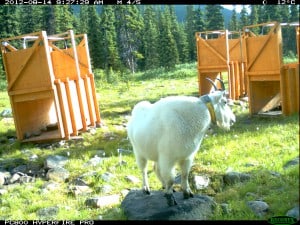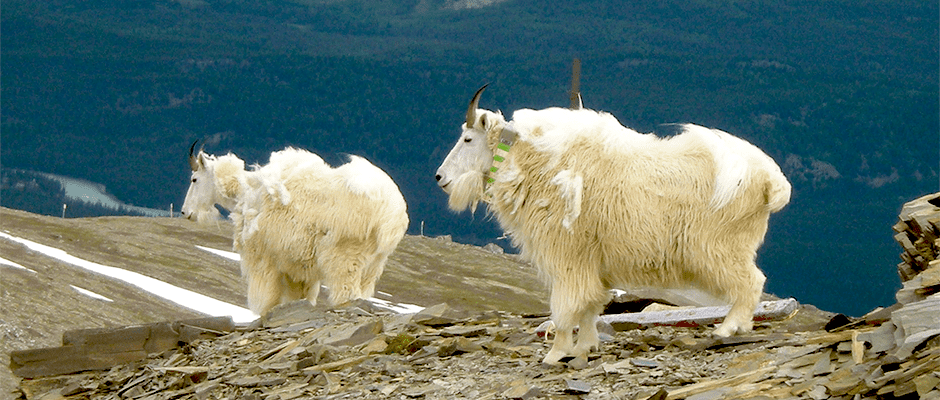Share this article
Mountain Goats Avoid Ski Resort Areas: JWM Study
Mountain goats don’t like to hit the same slopes as skiers, according to a new study that tracked goat activity around an Alberta ski resort.
“The goats were really sensitive to human presence,” said Julien Richard, a research professional at the University of Laval in Quebec City and the lead author of a study published in the Journal of Wildlife Management.
Richard and his coauthor were approached by Parks Canada to look at how mountain goats (Oreamnos americanus) around Jasper, Alta. would respond to a proposed land swap between the Jasper National Park and Marmot Basin ski resort. The resort wanted to exchange some land they didn’t use for other land they could use for development. Parks Canada wanted to know more about mountain goat ecology in the area before they made their decision.

A male mountain goat travelled 12.4 miles to access a mineral lick and was caught by a motion camera surrounded by box traps near by. ©Julien H. Richard
Mountain goats range from Alaska through western Canada to the mountainous areas of Montana and Idaho. While not listed as endangered or threatened in the United States or Canada, Richard says that some goat populations have been declining since 2008. Usually the goats aren’t affected much by humans since their habitats usually lie in rugged mountainous areas, but ski resorts are an exception to this.
From 2011to 2013, Richard and his coauthor monitored goats around the resort area by using camera traps and direct observation and by attaching GPS collars to captured goats.
Direct observation showed that goats tended to avoid humans that were hiking around the mountain resort area. “That was probably why they were avoiding the ski area,” Richard said.
The researchers also found key goat habitat, including a mineral lick area that the animals travelled as far as 15 miles to reach in one day. Richard says that the salty clay in an area near the resort helps the goats’ digestive systems when their diets switch from the winter to spring.
In addition to their paper in The Journal of Wildlife Management, the researchers also submitted a report of their findings to Parks Canada.
“Our recommendation was to not develop around the salt lick, which was an important feature, and that the ski hill shouldn’t be developed in the critical habitat,” he said, adding that they recommended at least a one kilometer buffer zone around the salt lick area in which tourism development would not be allowed.
Richard said that their report will be incorporated into future plans for development and long-term planning of the ski resort.
Header Image:
Male mountain goats top of Marmot Mountain a few weeks after researchers attached a GPS collar to the animal. Researchers tracked the male for over three years before it was predated by a grizzly bear.
©Julien H. Richard








